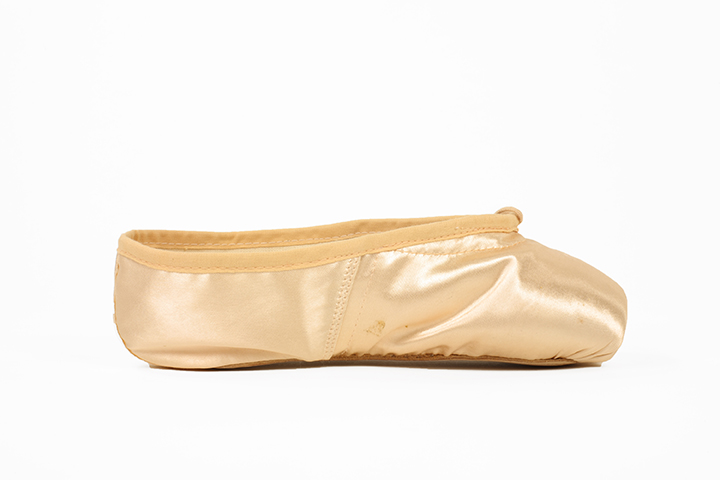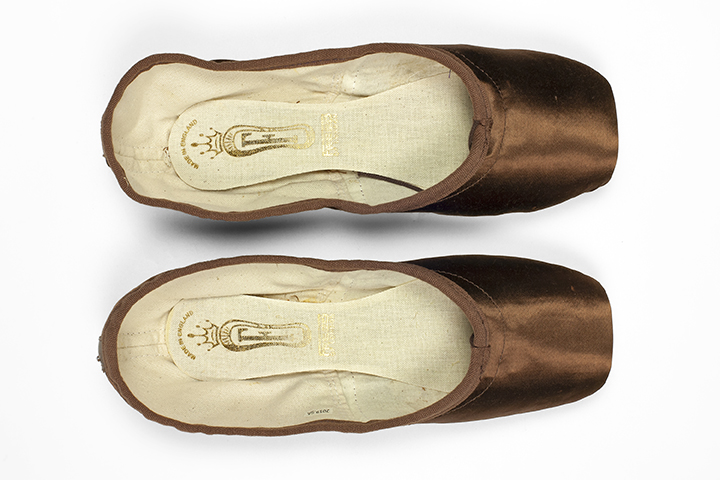At the Bata Shoe Museum, we often use footwear to explore histories of larger cultural concepts such as gender, capitalism, sex, colonialism and race. Often, these complicated stories are not obvious from just looking at the shoes themselves – it is through careful research on the history of the shoes and the contexts in which they were produced and worn which reveals how they are linked to these larger social and political practices. One example includes the ‘nude’ shoe. What colour comes to mind when one describes a ‘nude’ toned shoe? Where did this image come from? And can an analysis of ‘nude’ footwear allow us to raise larger questions about racial inclusivity in fashion?
In fashion, ‘nude’ refers to something that is meant to blend in with one’s skin tone. For decades in the Western fashion system, clothing, lingerie, cosmetics and footwear have been produced in nude shades. However, the range of hues offered have always been extremely limited to shades of pink, peach or beige, much to the frustration of individuals with deeper skin tones.
In the past several years, there has been a push in the fashion world to re-examine what colour(s) are considered ‘nude.’ But why now, when there have been complaints from consumers stretching back decades? This timing is likely due to the fact that there has been a larger cultural movement taking place in recent years which is shining a light on racial inequality and exclusion within the fashion system. Furthermore, social media has given a public platform to frustrated consumers who are emboldened to directly call out brands for the lack of inclusive shade ranges in what they offer. Popular Instagram accounts such as Diet Prada and Estee Laundry are examples of spaces where people have been able to share their frustrations.
In response, some footwear brands such as Stuart Weitzman have begun expanding their range of ‘nude’ shoes in recent years. Not only is there a growing cultural expectation that brands should become more shade inclusive, but also that brands themselves are recognizing that it is profitable from a business perspective to do so. At the same time, independent designers such as Rebecca Allen and Jeneba Barrie, who themselves have personally experienced the frustration of not being able to find nude footwear in their skin tone, have started to produce shoes that fill this market need.
One style of footwear that has received considerable media attention for its limited colour offerings is the ballet slipper. In ballet, the foot is considered an extension of the leg, which means that a dancer’s slippers have to match their skin tone to create a seamless line from leg to toe. Historically, ‘nude’ ballet slippers have been either pink or peach. Even as professional dance companies began to diversify from the 1960s onwards, ballet slippers have remained pink forcing dancers with darker skin tones to dye or ‘pancake’ their ready-made shoes with cosmetics and paints. Ballet dancers go through many pairs of slippers during rehearsals and performances, and dancers of diverse racial backgrounds have had to perform the labor of dyeing their slippers for decades – a labor that their lighter-skinned colleagues have never had to do.
Very recently, some ballet shoe manufacturers have responded to this need for slippers in more shades. In 2017, Bloch began to produce their ‘Cocoa’ shade ballet slipper. In 2018, the dance company Ballet Black, which celebrates Black and Asian representation in ballet, collaborated with Freed London, one of the largest producers of ballet slippers in the world, to release shade-inclusive ballet slippers in order to address these exclusionary practices.
The concept of ‘the nude shoe’ is one of many examples where we can discuss issues of race and exclusion through footwear. Stay tuned to this blog to learn more in the coming months!




